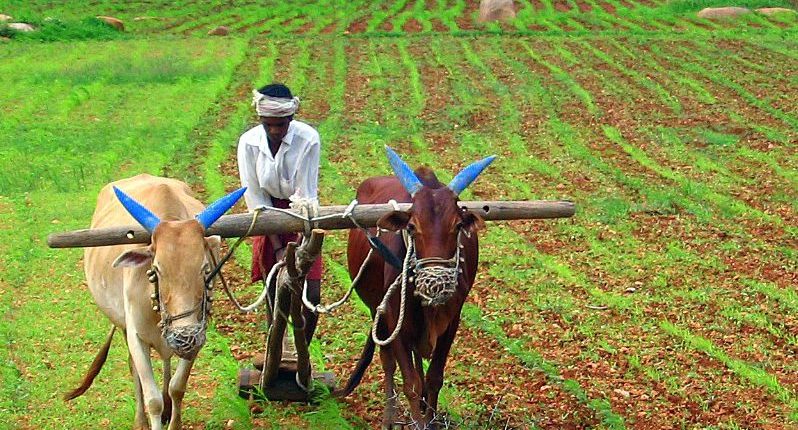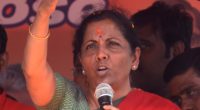Food costs play a significant role in the prosperity of poor people and poverty reduction in developing nations. Hence, government interventions in food grains markets have existed in some structure for quite a few years, since the Second World War.
In spite of the decrease in the share of expenditure on food items in the last few decades in both urban and rural territories, poor people still spend an enormous amount of food in developing nations.
What Ails the Farmer?
The most anticipated news in India right now is the arrival of the monsoons and the promise it holds for 144 million agricultural labourers and 119 million farmers. Three years ago, India produced its largest ever cereal food grain estimated at 273 million tonnes. There was also a bumper production in pulses, sugarcane and cotton.
The Indian Government has introduced many agricultural centric initiatives such as Pradhan Mantri Fasal Bima Yojana (PMFBY), Soil health cards, Pradhan Mantri Krishi Sinchayee Yojana (PMKSY), and National Agriculture Market (eNAM).
Minimum Support Price (MSP) for various crops has also been boosted regularly. Narendra Modi pledged to double farmers’ incomes by 2022 and this certainly makes for a rosy picture.
What Fails the Indian Farmer?
There is a disconnection between what the farmer produces and what the consumer requests. The farmer isn’t connected with aggregators, food processors, and retail chains to help shape the idea of his produce. Thus, production continues to remain the same every year, dependant on the farmers and is frequently determined by the government’s MSP program.
An Indian farmer is barely empowered as a supplier. He continues to be marginal and small, inadequately resourced, ill-informed on markets, burdened with loans and debts, and is dependent on traders to reach the buyers.
Farmers are neither equipped with the latest technology nor trained to adopt it. Absence of new technology solutions restricts the farmer from gaining an equal footing worldwide. Also, they have little control over driving development and change due to the involvement of multiple pressure groups such as environmentalists.
Is India Self-Sufficient in Food Grains?
India is very proud of the agricultural success stories it been has been writing for over seven years. In 2006-07, the country’s production was 217 million tonnes, which went up to 275.11 million tonnes in 2016-17. Hence, India concluded that the country was not only self-sufficient but also has enough to export.
However, it is disturbing to see that the country that portrayed a high production of food grain is also the country that recorded a high number of farmer suicides and protests in the last two decades.
The government’s own data shows that India barely has enough food to its feed its own people, let along being an exporter or self-sufficient. India is home to the highest number of hungry people – 270 million. The country stands 97th in Oxfam’s Food Availability Index and 103rd in the 2018 Global Hunger Index.
The Food Agriculture Organization has created three levels of self-sufficiency – below 80%, signifying food deficit, between 80 and 120%, showing self-sufficiency, and over 120%, indicating surplus. Although India shows between 80 and 120%, its own data shows that the country is not self-sufficient.
Numerous parts in India are still starved of wheat, rice, and pulses. The food available for each person remains stagnant for the past few years.
Food Subsidies in Lieu of Farmer Issues
In November 2006, the centre implemented the National Food Security Act, wherein food grains are supplied each month at a significantly subsidised rate of Rs 1-3/kg to more than 80 crore people in India.
For the 2017-18 fiscal, the government earmarked Rs 1,45,338 crore for food subsidy, which went up by 10% in the 2018-19 fiscal.
This year, India took a combative step towards its fight against hunger in recent times. The Interim Budget 2019 may hike the food subsidy bill to Rs 1.80 lakh crore, a 20% jump in allocation from 2018.
A government official told The Economic Times that there will be a steep hike in the MSP for numerous crops this year. Hence, the budgetary allocation should be increased considerably.
Additionally, the food ministry has also requested another Rs 20,000 crore for warehousing and storage.
Question Still Remains – Is the Farmer Making Any Money?
An onion farmer from Nashik, Sanjay Sathe has reportedly sent Rs 1,064 he earned by selling 750 kgs of onions to Narendra Modi as a mark of protest. Farmers in India have been demonstrating against the dipping prices for their produce.
As per the report of the Committee on Strategy for Doubling Farmers’ Income by 2022, farmers in the country did not recover from their investments let alone receiving a decent profit. The wholesale price index (WPI) for food articles was lower than the agricultural inputs as a result of the rising input expenses such as electricity, irrigation, fertilisers, and pesticides.
Clearly, the farmers are not earning enough for their produce. DownToEarth conducted a survey of 23 crops for income and investment in 2014 and showed that farmers in only seven states have reported an income increase while in states such as Jharkhand, Bihar, and Odisha, farmers have incurred losses in terms of paddy.
Wheat-producing states such as Himachal Pradesh, West Bengal, Chhattisgarh, and Jharkhand have reported losses.
The Centre for Study of Developing Societies (CSDS) in Delhi also conducted a study called ‘State of Indian Farmers’, which suggested that 76% of the farmers wanted to give up farming, 61% of the farmers wants to be employed in other cities due to better health and employment avenues and education. 70% of the farmers said that the crops were destroyed because of natural disasters.
Government’s Initiatives and Farmer Credits
In the Interim Budget 2019, the government promised income support of Rs 500 each month for 12 crore farmers, both small and marginal, in a bid to fight the agrarian crisis.
Under the Pradhan Mantri Kisan Samman Nidhi (PM-KISAN), the government has declared Rs 6,000 annually to each farmer in three instalments whose land holding is below 2 hectares. The Indian Government has allocated Rs 75,000 crore for 2019-2020, which will be directly transferred to the farmers’ bank accounts.
Before the elections, each farmer family received Rs 2,000 as the Modi government allocated Rs 20,000 for one retrospective instalment from December 2018 to March 2019.
Last year, similar schemes with better cash amount were implemented in Odisha and Telangana. Under the Rythu Bandhu programme, the Telangana government provides Rs 8,000 per year to its 5.83 million farmers. The state government had decided to pay Rs 4,000 each for Kharif and Rabi cropping seasons.
The Odisha government introduced a similar programme but with a twist – it has decided to provide Rs 10,000 per family for tenant farmers and landholders for five seasons between 2018-19 and 2021-22.
The West Bengal government plans to give Rs 5,000 per acre before the two sowing seasons in a year to its farmers.
Several NBFCs are also providing loans to farmers such as Jai Kisan allows small farmers to borrow between Rs 20,000 and Rs 30,000. Big farmers borrow from Rs 1.5 lakh to Rs 20 lakh. Jai Kisan subsidises loan interest rates using the commission it gets on the sale of farm equipment. The lending rate at about 12% is much lower than that charged by other NBFC players.
As per the World Bank report, the lack of unadulterated food, nutritious, and ingesting of unsafe food resulted in 600 million illnesses and 420,000 deaths in 2010. Hence, the question of food safety and security still remains a question.

An Editor by day and a sloth by night…I would love to eat and sleep throughout the day if given a chance…I enjoy reading and love my job and my team at ClearTax.





